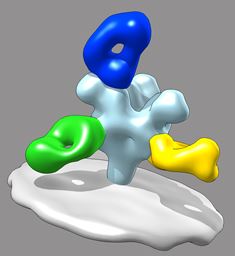Scripps labs studying the structure of antibodies to Ebola virus
13 August 2014
Laboratories at The Scripps Research Institute (TSRI) are investigating antibodies to fight Ebola virus, including the three experimental antibodies recently used to treat two American health care workers infected with the virus.
The two Americans received a highly experimental antibody cocktail called ZMapp, supplied by San Diego-based Mapp Biopharmaceutical.
 The
TSRI laboratories of Professor Erica Ollmann Saphire (Photo on the
right) and Assistant
Professor Andrew Ward are studying the structures of these
antibodies using electron microscopy, which creates high-resolution
images by hitting samples with electrons, and X-ray crystallography,
which determines the atomic structure of crystalline arrays of
proteins. Through these images, the team will discover exactly how
the immune system molecules bind to the Ebola virus and stop it from
functioning, a critical step in drug development.
The
TSRI laboratories of Professor Erica Ollmann Saphire (Photo on the
right) and Assistant
Professor Andrew Ward are studying the structures of these
antibodies using electron microscopy, which creates high-resolution
images by hitting samples with electrons, and X-ray crystallography,
which determines the atomic structure of crystalline arrays of
proteins. Through these images, the team will discover exactly how
the immune system molecules bind to the Ebola virus and stop it from
functioning, a critical step in drug development.
First identified in the Congo in 1976, the Ebola virus causes an extremely virulent disease that currently leads to death in 25 to 90% of cases. Fruit bats were identified as a reservoir of the virus in 2006. The fast-moving virus is spread via the blood or other bodily fluids of an infected person. Outbreaks of the fast-moving virus, which spreads via the blood or other bodily fluids of an infected person, have occurred in Uganda and the Democratic Republic of Congo in recent years. In 2006 a University of Uppsala study also found that the Ebola virus had killed 5000 gorillas over 2002-4.
“What we’re showing are sites of vulnerability on the surface of the virus,” said Daniel Murin, a graduate student in the Saphire and Ward labs. “These are the chinks in the armour of the virus and the places were you would want your anti-serum to target.”
The ZMapp treatment is still in experimental stages and has not yet been approved for use outside the two recent cases. According to Saphire, ZMapp is one of the best antibody cocktails currently known, but there may still be ways to improve it.

The structure of Ebola virus (centre, light
blue) with the ZMapp antibodies attached (coloured). This structure
was solved using electron microscopy. Photo credit: Daniel
Murin, The Scripps Research Institute.
Professor Saphire is currently leading a $28 million National Institutes of Health-funded consortium to test antibody cocktails from laboratories around the world, with the goal of finding the best for neutralizing Ebola virus. The program is also developing antibody cocktails to fight other hemorrhagic fever viruses such as Marburg, Sudan and Lassa viruses.
For decades, scientists thought no antibodies were effective against Ebola virus, but in 2012, research from the U.S. Army Medical Research Institute of Infectious Diseases showed that a mix of antibodies can stop the virus. Other labs around the world were simultaneously testing other such antibody cocktails with success.
Today, a whole menu of antibodies have been identified as potentially therapeutic, and researchers are eager to figure out which combinations are most effective and why. Antibodies are currently thought to be the best strategy for treating rare and deadly viruses such as Ebola because they are effective even a couple of days after exposure, a time period during which a person could be airlifted to a hospital for treatment.
An ideal antibody cocktail would ease symptoms and improve the prognosis of infected individuals—it could even work as a preventative measure, protecting healthcare workers before they enter an infected area.
The work on the Ebola virus is part of a larger Vaccine and Global Health Initiative at TSRI, which includes research on HIV/AIDS, influenza and tuberculosis.
Scripps Research Institute video of Professor Erica Ollmann Saphire talking about creating a road map for new treatments